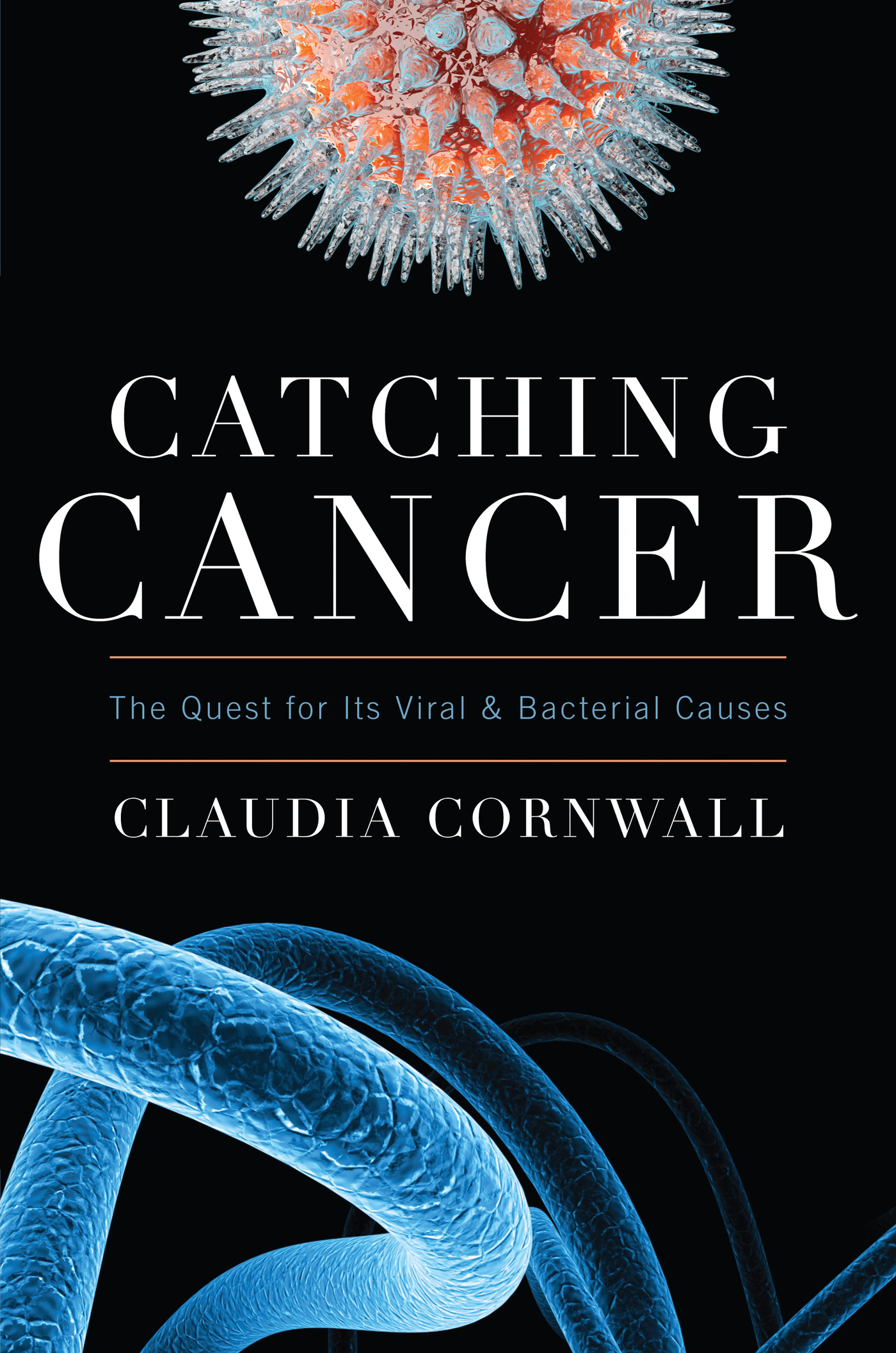Catching Cancer
Catching Cancer
The Quest for Its Viral and Bacterial Causes
Claudia Cornwall
ROWMAN & LITTLEFIELD
Lanham Boulder New York London
Published by Rowman & Littlefield
A wholly owned subsidiary of The Rowman & Littlefield Publishing Group, Inc.
4501 Forbes Boulevard, Suite 200, Lanham, Maryland 20706
www.rowman.com
16 Carlisle Street, London W1D 3BT, United Kingdom
Copyright 2013 by Rowman & Littlefield Publishers, Inc.
First paperback edition 2014
All rights reserved. No part of this book may be reproduced in any form or by any electronic or mechanical means, including information storage and retrieval systems, without written permission from the publisher, except by a reviewer who may quote passages in a review.
British Library Cataloguing in Publication Information Available
Library of Congress Cataloging-in-Publication Data
The hardback edition of this book was previously cataloged by the Library of Congress as follows:
Cornwall, Claudia Maria.
Catching cancer : the quest for its viral and bacterial causes / Claudia Cornwall.
p. ; cm.
Includes bibliographical references.
I. Title. [DNLM: 1. Neoplasms--history. 2. Neoplasms--microbiology. 3. History, 20th Century. 4. Oncogenic Viruses--pathogenicity. QZ 11.1]
616.99'4--dc23
2012044457
ISBN 978-1-4422-1520-7 (cloth : alk. paper)
ISBN 978-1-4422-1521-4 (pbk. : alk. paper)
ISBN 978-1-4422-1522-1 (electronic)
 The paper used in this publication meets the minimum requirements of American National Standard for Information Sciences Permanence of Paper for Printed Library Materials, ANSI/NISO Z39.48-1992.
The paper used in this publication meets the minimum requirements of American National Standard for Information Sciences Permanence of Paper for Printed Library Materials, ANSI/NISO Z39.48-1992.
Printed in the United States of America
They are the taboo breakers who enjoy the whiff of grapeshot and the crackle of thin ice. E. O. Wilson
Acknowledgments
Many people helped me to write this book. I would like to thank my husband, Gordon Cornwall, who has supported me in so many ways, perhaps most of all by insisting that I carry on with the project, despite his serious medical issues. Palmer Beasley, Lu-Yu Hwang, and Cladd Stevens were generous with their recollections of their research in Taiwan. Bruce Beasley told me stories about his brothers childhood. Harvey Alter and Timothy Block contributed their insights about the history of hepatitis B research. Tiffany Shih found and translated relevant newspaper articles, and Tilman Aretz clarified the mysterious world of Taiwans officialdom for me. Id like to thank Harald zur Hausen and his colleagues for giving me so much of their time: Heinrich Schulte-Holthausen, Matthias Drst, Michael Boshart, Elisabeth Schwarz, Lutz Gissman, and Magnus von Knebel-Doeberitz. Id also like to thank Manfred and Winfried zur Hausen for their memories. Bernard Roizman, George Klein, Clyde Goodheart, and Andre Nahmias helped me to re-create a fateful meeting in Key Biscayne. Barry Marshall and Robin Warren gave me long interviews, and John Papadimitriou, Arthur Morris, David Foreman, and Martin Skirrow all took me back to the early days of H. pylori research. Paul Ewald gave me several hours of his time, and Patrick Moore was patient with my many questions. Robert Holt helped me to see some of the new directions the research was taking. Kristine Fersovich and Arline kindly gave me the patients point of view. Id like to thank the Canadian Institutes for Health Research for the initial grant which helped get the book off the ground and also my editors at Readers Digest Canada, Mary Aikins and Peter Stockland, for accepting my proposal to write an article about cancer and infectionsmy first foray into the topic. Finally, Id like to acknowledge my agent, Robert Lecker, and my editor, Suzanne Staszak-Silva, for their enthusiasm and encouragement.
Introduction
In the Face of General Opinion
Have they got a cure yet? the cabby asked, looking inquiringly at me in the rearview mirror. Wed been chatting, and hed wanted to know what brought me to Toronto. I told him Id come to hear some lectures about cancer. Like everyone else, my driver was aware that for years, researchers had been seeking a cure. When people thought about vanquishing cancer, this naturally came to mind. I said that scientists were working toward preventing the disease. If they succeeded, millions of people would never get sick, would never need a cure. He smiled at me. I wasnt sure whether he approved or was skeptical and too polite to say anything.
It was November 2009, and I was attending a conference at the University of Toronto to commemorate the fiftieth anniversary of the Canadian Gairdner Awards. Researchers from all around the world have won these prizes for (among other things) eradicating smallpox, curing ulcers, inventing CT scans, and creating immune-suppressing drugs that make organ transplants possible. The three-day event was a celebration of discovery. Winners from previous years came to join in the festivities, and because many of them had gone on to win the Nobel Prize, it was a star-studded assembly indeed.
Students, professors, members of the public, and journalists like me listened in on the sessions held under the domed rotunda in Convocation Hall. Scientists spoke about stem cells, the challenge of chronic disease, the immune system, infections, and cancer. I remember one panel discussion about the possibility of sequencing ones own genome. Dr. Michael Hayden, a renowned geneticist (who identified the genes responsible for Huntingtons disease and other disorders), moderated the conversation. When he invited questions from the audience, a hushed silence descended. He said, You know, you dont have to be a Nobel Prizewinner to ask a question. A few shy hands went up.
I was interested in the lectures about cancer and infection because I was gathering research material for a magazine article. When Dr. Harald zur Hausen began to speak, I paid particular attention. The previous year, he had won a Nobel Prize for the discovery that the human papillomavirus (HPV) causes cervical cancer, a disease which kills 275,000 women every year. The worlds third most common cancer in women, it exacts a grave toll, especially in developing countries that have few screening programs and limited treatment options. Zur Hausens research made possible a vaccine that prevents 70 percent of cervical cancers. By 2009, Merck & Co., the pharmaceutical company making it, had dispensed 40 million doses.
A courtly, dignified man in his early seventies, zur Hausen spoke quietly and precisely. He made few hand gestures and eschewed rhetorical flourishes, but his story was dramatic. He said that globally, 21 percent of cancers (over 2.5 million cases annually) were now linked to infections. This was quite a shift from just forty years earlier, when scientists had not identified a single infectious cause of a human cancer. Moreover, we now had vaccinesto prevent cervical and liver cancer. Zur Hausen expressed his confidence that more breakthroughs would follow. He noted that in the past fifteen years, investigators had found several suspicious viruses and virus families.
As I sat on my hard wooden chair listening to zur Hausen and watching the numbers and graphs scroll behind him on the screen, I wondered if this is what a medical revolution felt like. Cancer was one of the most feared of all sicknesses, known since ancient times. At home, I had a book called
Next page
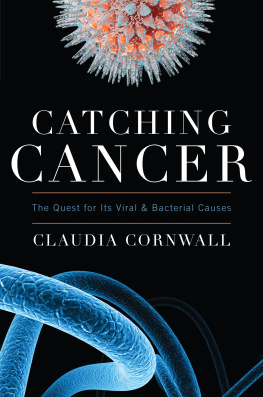
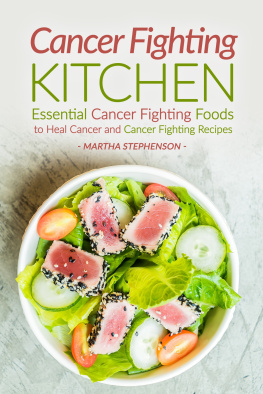
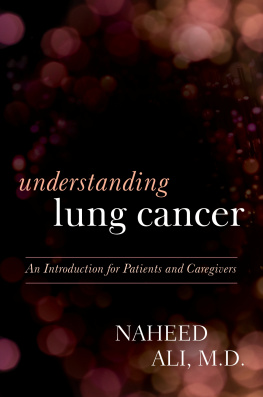
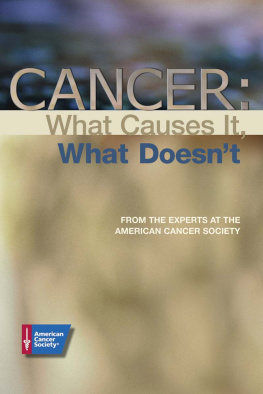
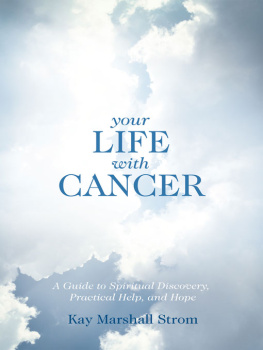
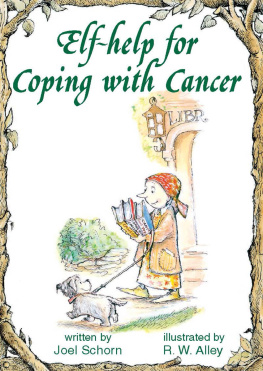

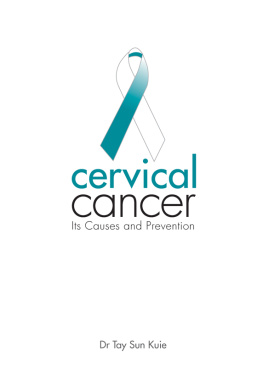
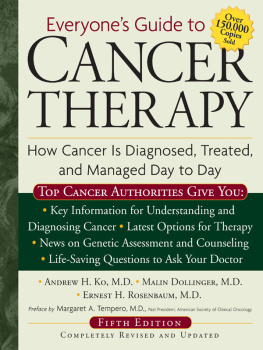
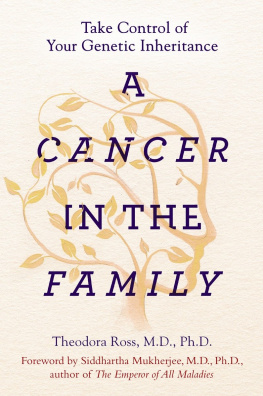
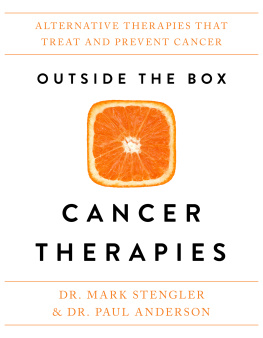

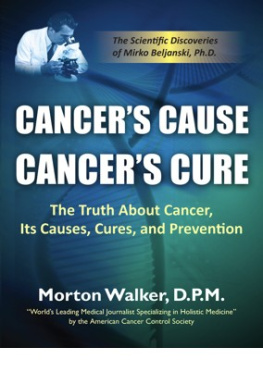
 The paper used in this publication meets the minimum requirements of American National Standard for Information Sciences Permanence of Paper for Printed Library Materials, ANSI/NISO Z39.48-1992.
The paper used in this publication meets the minimum requirements of American National Standard for Information Sciences Permanence of Paper for Printed Library Materials, ANSI/NISO Z39.48-1992.